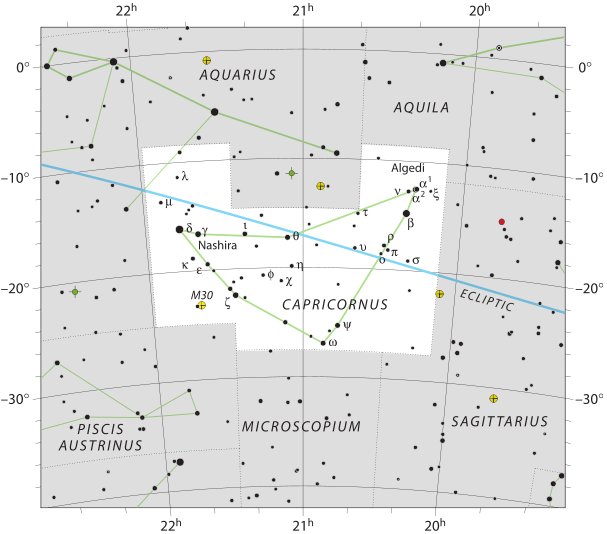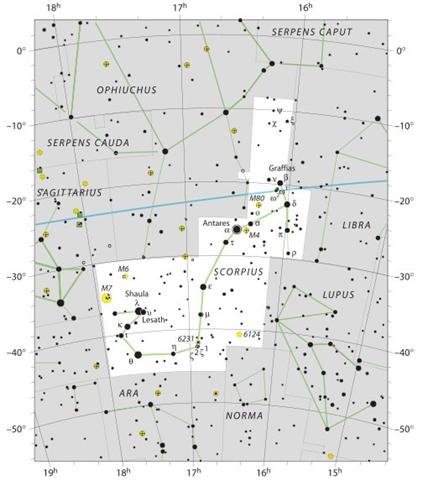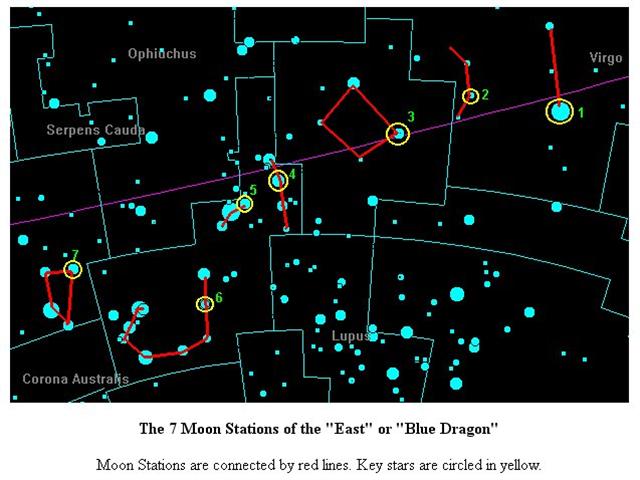1. There are 12 Greek lettered Capricornus stars in the 22nd hour:
In addition to those 12 in the 21st hour it means there are 24 Greek lettered stars in the constellation. All the letters have been used up. "The title Tropic of Capricorn, originating from the fact that when first observed the point of the winter solstice was located here, now refers to the sign and not to the constellation, this solstice at present being 33º to the west ward, in the figure of Sagittarius, near its star μ. Capricorn is, after Cancer, the most inconspicious in the zodiac ..." (Allen)
This is most revealing. The star μ Scorpii is Deneb-Akrab (The Tail of the Scorpion), beyond which the curve to the sting is beginning. In the Chinese Blue Dragon it is moon station number 6:
In the G text μ Scorpii evidently is at Ga7-21 (the last day of 'November):
The name Wei for ε Scorpii probably means 'tail': ... The Chinese name Ma Wei for δ Centauri means 'the Horse's Tail' says Allen ... In Allen's description of Scorpius I indeed find my conclusion confirmed. At δ Scorpii he writes (cfr at Ika Hiku): ... In China the 2d-magnitude star ε, with μ, ζ, η, θ, ι, κ, υ, and λ, formed the 17th sieu, Wei, the Tail, anciently known as Mi and as Vi, μ being the determinant; but, although this Tail coincided with that part of our Scorpion, Brown thinks that reference is rather made to the tail of the Azure Dragon, one of the quadripartite divisions of the Chinese zodiac which lay here ... The technical term deneb for the 'tail' (end) of a figure seems to correspond to the Chinese wei:
... The Chinese call β Mah Fuh, the Horse's Belly ... (Cfr at Centaurus.) ... For the Marquesas are given: - daybreak, twilight, dawn, ('the day or the red sky, the fleeing night'), broad day - bright day from full morning to about ten o'clock -, noon ('belly of the sun') ... |








